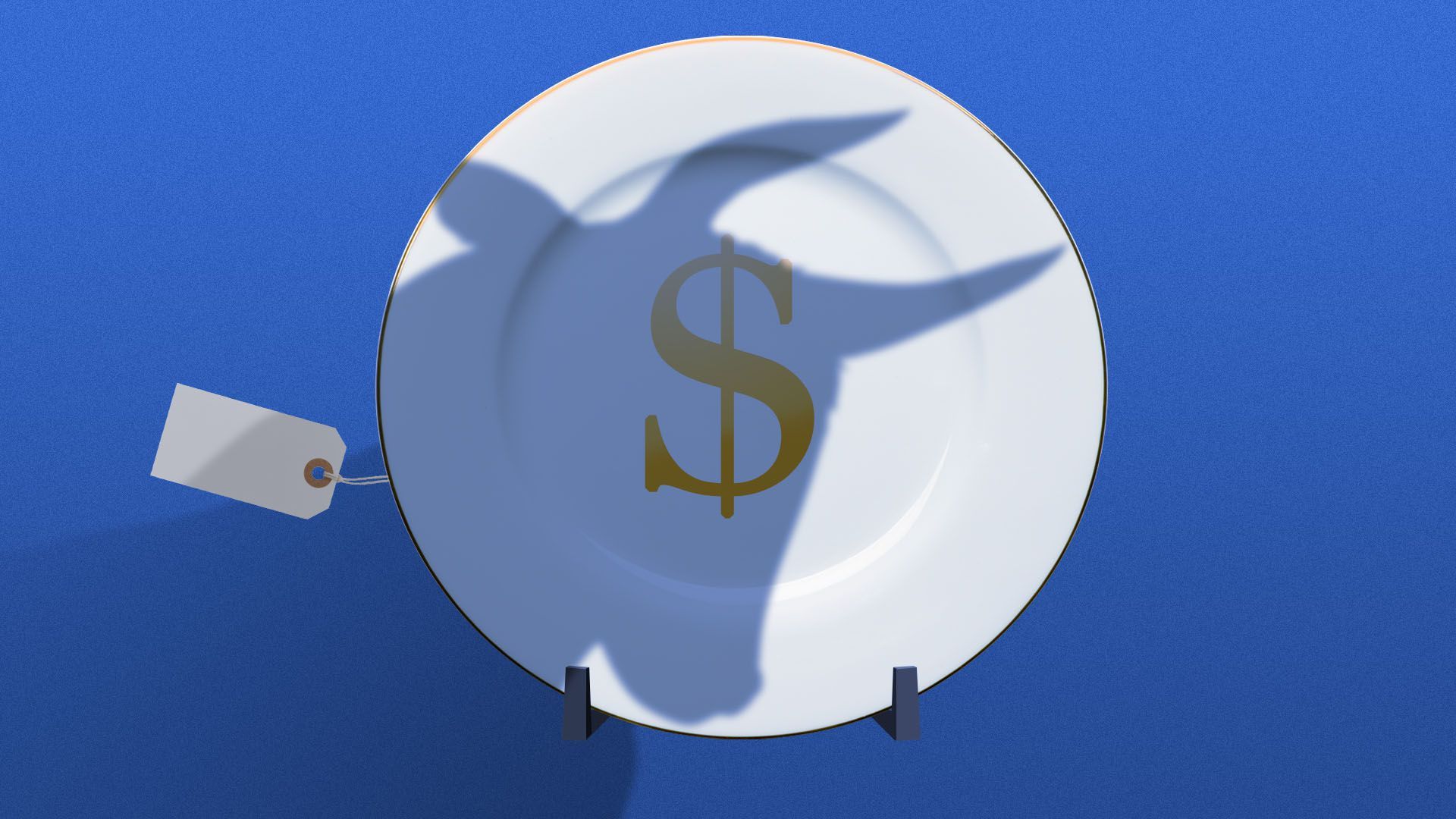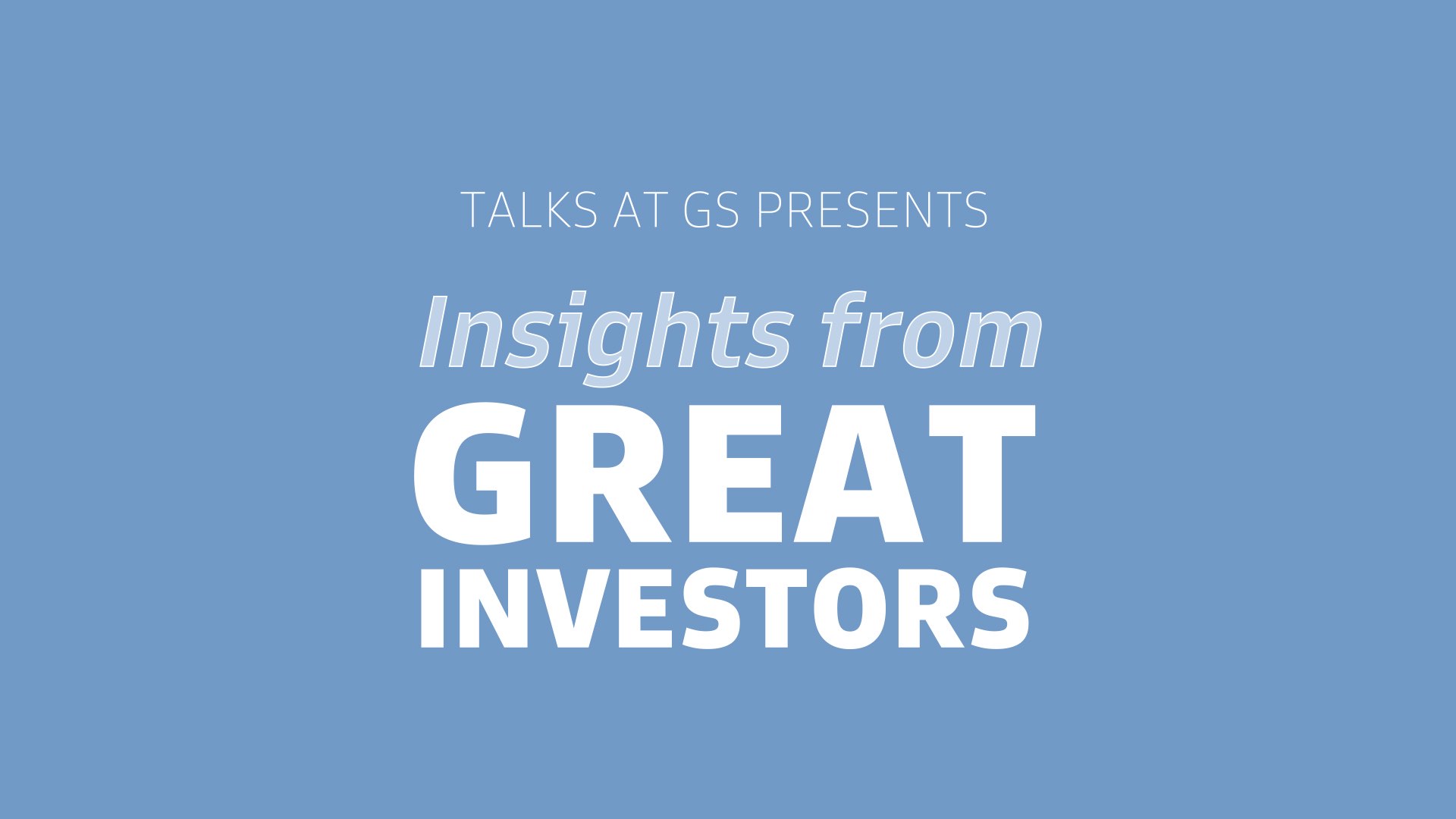| | | | | | | Presented By Goldman Sachs | | | | Axios Markets | | By Dion Rabouin ·Dec 01, 2020 | | 💼 I'm back! Thanks to everyone who sent me suggestions on where to go while I was on the Hawaiian islands over the past couple weeks. Mama's Fish House in Maui had a three-week waiting list, but I think I did most everything else. I saw two whales, dozens of dolphins and I finally get why people like poke so much. - Was this email forwarded to you? Sign up here. (Today's Smart Brevity count: 1,243 words, <5 minutes.)
🎙 "I have learned over the years that when one's mind is made up, this diminishes fear; knowing what must be done does away with fear." — See who said it and why it matters at the bottom. | | | | | | 1 big thing: Everyone's bullish |  | | | Illustration: Sarah Grillo/Axios | | | | Following positive vaccine news and the run-up in global equities punctuated last week by the Dow hitting 30,000 points, investors are again throwing caution to the wind and growing more uniform in their bets that stocks will continue to rise. Between the lines: The resurgence of traders' risk appetite has some urging caution, as unanimity in either excitement or fear historically has proven to be a contrarian signal for the stock market. What's happening: Last week saw a record inflow into stocks, according to Bank of America, which recorded $89 billion of fund flows, surpassing the previous all-time high set in January 2018. - There was also a record flow of funds into emerging market debt and equities, BofA noted, both of which are considered especially risky.
- That followed a week when data from the Investment Company Institute showed $22 billion of net fund flows into equities, the first week of positive flows since mid-September.
On Wall Street, analysts are raising their S&P 500 price targets and urging clients to increase their allocation to stocks. - JPMorgan strategists earlier this month said they expect the S&P to reach 4,000 by early next year and raised their 2021 year-end price target to 4,500 — about 878 points, or 24%, above where it closed on Monday.
- Analysts at Goldman Sachs raised their year-end 2021 target to 4,300 and to 4,600 by the end of 2022.
What they're saying: "During most of the bull market since 2009, our projections for the S&P 500 were either the most bullish or among the most bullish of Wall Street's investment strategists. Now others are getting ahead of us," longtime market bull Ed Yardeni wrote in a recent note to clients. - "We'll let them have the glory. We would like to see fewer bulls."
The last word: Bank of America on Friday doubled down on its call for a 2021 that could disappoint the market's freshly minted super bulls, noting that its fund manager survey's "cash rule" was closing in on a sell signal. - Further, the bank's contrarian Bull & Bear indicator showed increasingly thirsty stock traders and its "breadth rule," which tracks whether global equity markets are overbought or oversold, signaled a sell call on Nov. 11.
- They expect 2021 to be "a year of vaccine not virus, a year of reopening not lockdown, a year of recovery not recession … a year of asset market rotation not asset market rally."
|     | | | | | | Bonus chart: A sweet November |  Data: FactSet; Chart: Axios Visuals Stock bulls had a lot to be thankful for in November as all four major U.S. equity indexes held major rallies. - Despite closing lower on Monday, the Dow rose 11.8%, its best monthly gain since January 1987 and its best November on a percentage basis since 1928.
- The Nasdaq had its best month since April and its best November since 2001.
- The S&P marked its largest monthly percentage gain since April and its best November on record.
- The Russell 2000 rose 18.3% in November for its best monthly gain ever.
Of note: The Nasdaq is up nearly 36% year to date, while the Dow has gained just under 4%, with the Russell up 9% and the S&P 500 12% higher than where it began the year. |     | | | | | | 2. Catch up quick | | The S&P 500 will add Tesla as a component to the index all at once in December. (WSJ) Treasury Secretary Steven Mnuchin and Fed chair Jerome Powell will testify before Congress today and tomorrow. (N.Y. Times) - In prepared testimony Mnuchin will blame state and local lockdowns for the country's economic problems and urge Congress to repurpose $455 billion of unused funds from the CARES Act to fund a coronavirus relief bill.
- Powell's prepared comments will note positive news on vaccines but caution that the pace of the economic recovery has moderated.
The ICE Benchmark Administration is consulting on plans to extend the retirement date for 3, 6 and 12-month dollar Libor until late June 2023. (Bloomberg) |     | | | | | | A message from Goldman Sachs | | How is the pandemic reshaping the health care sector? | | |  | | | | Wellington's Jean Hynes joins Goldman Sachs' Insights from Great Investors to discuss her focus on: - Investing in the health care sector.
- Advances that are transforming the medical field.
- The importance of a collaborative investing culture.
Join the conversation. | | | | | | 3. Banks tightened standards, reduced lending in Q3 |  | | | Illustration: Eniola Odetunde/Axios | | | | Loan growth at U.S. banks declined in the third quarter, as banks tightened lending standards and demand from businesses fell. Why it matters: It's the latest piece of evidence showing that the Fed's programs are helping prop up Wall Street but aren't trickling down to help most everyday Americans. - Banks cited the poor economic outlook and a reduced risk tolerance for their decisions to further tighten loan standards. Some banks also pointed to less aggressive competition from other lenders.
Driving the news: Gross loans at the 15 largest U.S. banks, excluding Paycheck Protection Program loans, fell 1% quarter over quarter in Q3, and overall lending saw a 0.9% decline, S&P Global announced Monday. - Commercial and industrial loans fell as 14 of the 15 largest U.S. banks reported a decrease.
The big picture: The news followed the Fed's latest survey of senior loan officers on Nov. 9 that showed banks continued to tighten standards for lending despite the Fed's QE4ever program and hundreds of billions of dollars in financing via its special purpose vehicles. - For consumers, banks are requiring higher minimum credit scores for credit cards and auto loans.
- Small businesses are seeing higher collateralization requirements and higher premiums on loans as well as the use of interest rate floors, the survey found.
|     | | | | | | 4. BlackRock's new assessment of climate change investment risk |  | | | Illustration: Rebecca Zisser/Axios | | | | Axios' Amy Harder writes: Investors will be able to see what impact a warming world and the transition to cleaner energy sources could have on their portfolios in a tool BlackRock unveiled Tuesday. What's new: A lot of disparate data already exists about the impacts of climate change, but BlackRock is integrating the data into its risk management platform, Aladdin, to make it more actionable, according to Mary-Catherine Lader, the platform's top sustainability official. The big picture: Climate change poses two types of risks — those that come from a warming world, and those that come from the world transitioning to cleaner energy. - Ocean-front property is at risk of the former; fossil-fuel companies the latter (to name two obvious examples).
How it works: Aladdin Climate inputs data on both risks from many sources. - The platform includes a ranking system that compares an investment's climate risk to that of similar investments (including specific companies) from zero to 10, zero being good for a warming world (or energy transition) and 10 being bad.
- Firms will be able to set policies limiting investments in anything over a specific level.
- It will also let investors compare climate risk's impact to other economic risks.
The intrigue: Lader's boss is Brian Deese, President-elect Joe Biden's pick for his top economic adviser. Deese has been BlackRock's global head of sustainable investing for the last few years after holding top climate positions in the Obama administration. Read more |     | | | | | | 5. The Challenge Q4: Staying on top |  Data: FactSet; Chart: Axios Visuals The challenge continues! Because investing isn't a sprint, it's a marathon, the 2020 Rabouin Investing Challenge™ continues between me and my 18-year-old cousin Senya. Background: Senya graduated from high school earlier this year and as a graduation present I sent her $500. But I told her she had to invest it and that each quarter we would compete to see who could assemble the best portfolio. Portfolios: We are both confident in our picks for the long-run, and I am sticking with my double serving of gold ETF, IAU; the Direxion work from home ETF, WFH; and EMQQ, the emerging market eCommerce ETF that I picked back in July. - She also made no changes to her holdings of logistics REIT Prologis; eBay; Rite-Aid; Gap; and Conagra.
Watch this space: Despite the dollar's recent descent to its lowest in two-and-a-half years, expectations for capped U.S. interest rates, and a booming stock market (which had tracked with gold for much of the summer), gold has been getting hammed since peaking in early August above $2,000 a troy ounce. - As of Monday, gold was up 17.9% on the year, but is down 2% since my bet with Senya started on July 20 (and down 14% since Aug. 6).
- For Senya, Gap is carrying her returns. It's up 68.9% since July 20, down from 118.5% on Nov. 24.
|     | | | | | | A message from Goldman Sachs | | What's on the minds of some of the world's great investors? | | |  | | | | Each week, Goldman Sachs brings viewers an interview with leading private and public investors. Why it's important: Some of the world's greatest investors will provide insight on their investing philosophies and how they are approaching the new investing landscape. Explore their insights. | | | | Thanks for reading! Quote: "I have learned over the years that when one's mind is made up, this diminishes fear; knowing what must be done does away with fear." Why it matters: On Dec. 1, 1955, Rosa Parks was arrested for refusing to move to the back of a bus and give her seat to a white passenger in Montgomery, Alabama. | | | | Axios thanks our partners for supporting our newsletters.
Sponsorship has no influence on editorial content. Axios, 3100 Clarendon Blvd, Suite 1300, Arlington VA 22201 | | | You received this email because you signed up for newsletters from Axios.
Change your preferences or unsubscribe here. | | | Was this email forwarded to you?
Sign up now to get Axios in your inbox. | | | | Follow Axios on social media:    | | | | | |








No comments:
Post a Comment